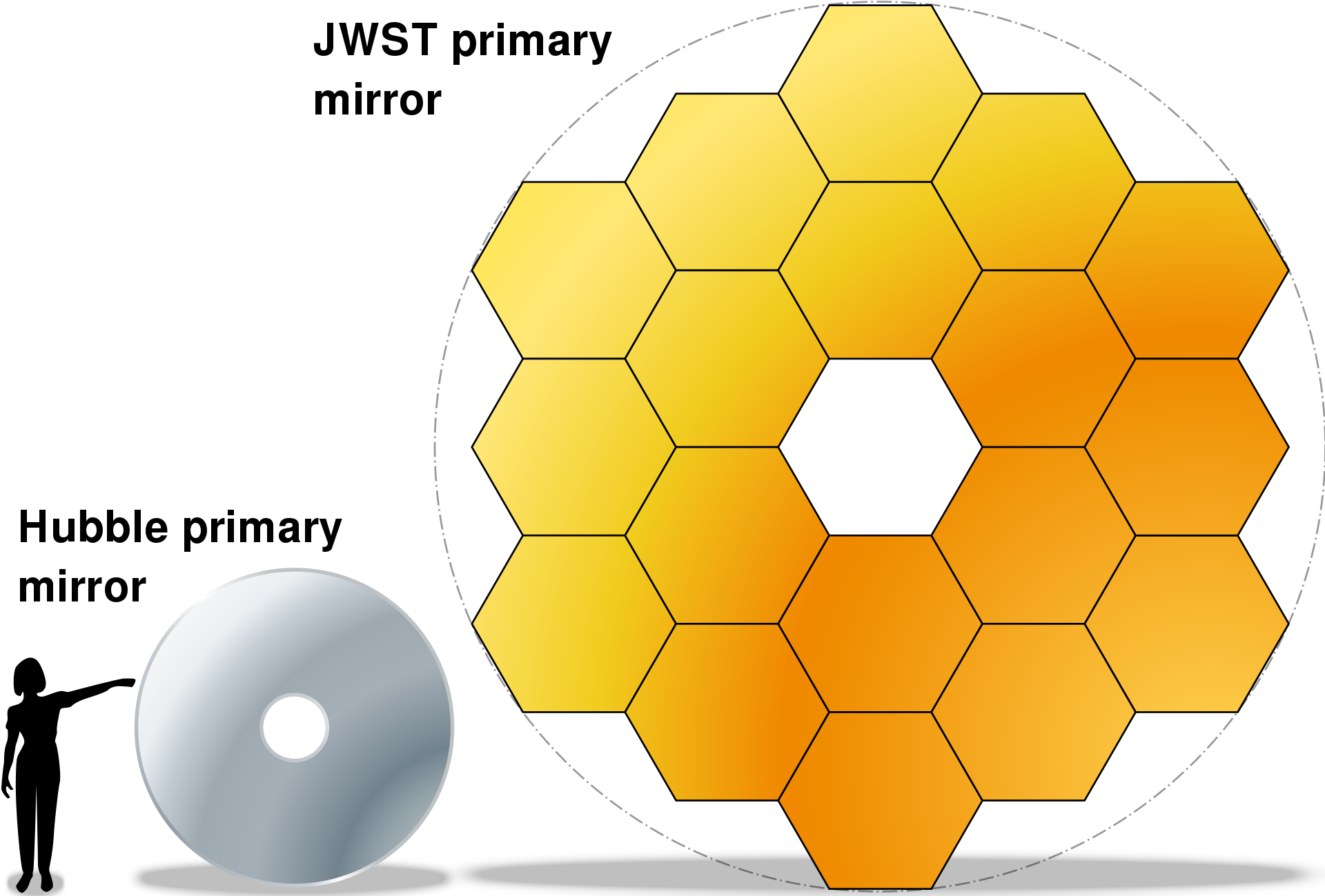James Web Space Telescope
The Math of the JWST
A regular hexagon is a six sided polygon where all of the sides are the same length and all interior angles are the same. By combining regular hexagons, you can roughly create a circular shape, because hexagons fit together without gaps. This was the primary reason that hexagons were used as the shape for the mirrors of the James Web Space Telescope (see below).
Hexagons were used by NASA in the James Webb Space Telescope.

Image provide by: Bobarino - Own work based on: File:JWST-HST-primary-mirrors.jpg a NASA public domain image, CC BY-SA 3.0
The side of each of the 18 JWST hexagon mirrors is approximately 0.737 meters. Enter 18 for n and 0.737 meters for s in this calculator to compute the approximate light gathering area of the JWST. Use the area of a hexagon calculator to compute the area of one mirror. The primary mirror of the Hubble Space Telescope is 2.4 meters in diameter. Use the area of a circle calculator (CLICK HERE) to compute the area of the Hubble Space Telescope primary mirror.
The Lagrange Points (L1 and L2) calculator computes the approximate radius (r) from a smaller mass (M2) to the first two Lagrange Points.
Lagrange points are a phenomenon of celestial mechanics. They are special locations in space where the forces of gravity between major celestial bodies such a a star (e.g., our Sun) and a planet (e.g., the Earth) are equal. The force of gravity is a function of the masses involved and the distances between them. In large body systems like our solar system, Lagrange points are noteworthy and sometimes useful because of their stability.
Lagrange Point L1 is located on a line between the two masses where the gravitational force of the two masses are equal. This has the net effect of keeping the object at a constant distance from the two objects. The orbital period of the object is equal to that of the smaller mass object. Normally, a body closer to the larger mass would have a shorter orbital period. However the pull of the smaller object (M2) keeps the object in same rate of rotation around the major object (M1). Lagrange Point L2 is also on the line connecting M1 and M2, but is further from M2 (see diagram). L2 will is the location of the James Web Space Telescope (JWST).
The formula for the radius of Lagrange Points L1 and L2 to M2 is:
r ≈R⋅3√M23⋅M1
where:
- r is the distance from the smaller object to the Lagrange point.
- R is the distance between the two major objects
- M1 is the mass of the primary object
- M2 is the mass of the secondary object.
Note: the radius for L1 is the same for L2.
Animation from Wikipedia's article on Lagrange Points.
(https://en.wikipedia.org/wiki/Lagrange_point)
L2 and the JWST
The James Web Space Telescope is located at L2 for several reasons. The first reason is that L2 is the furthest location from the Sun, Earth and Moon that is still continuously close enough to the Earth for easy communications. L2 is nearly 4x the distance of the Earth to the Moon. The Sun emits large amounts of light energy that could obscure what a highly sensitive telescope can see, That is why the JWST has such a large (4 layer) solar shield. Nonetheless, the JWST is solar powered. Again, L2 is inline with the Earth, but not so close the Earth blocks the Sun's light.
James Web Space Telescope Equations
- Lagrange Points L1 and L2 KurtHeckman Use Equation
- Sum of Hexagon Areas KurtHeckman Use Equation
- Attachments
No attachments |
